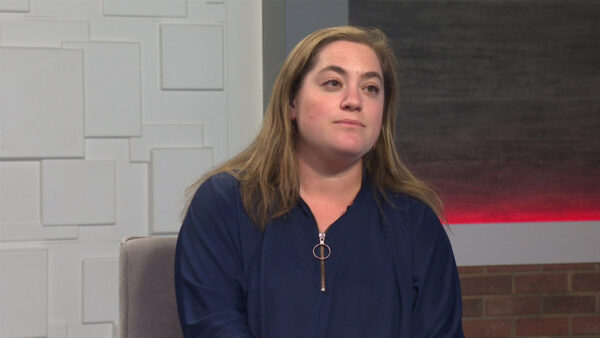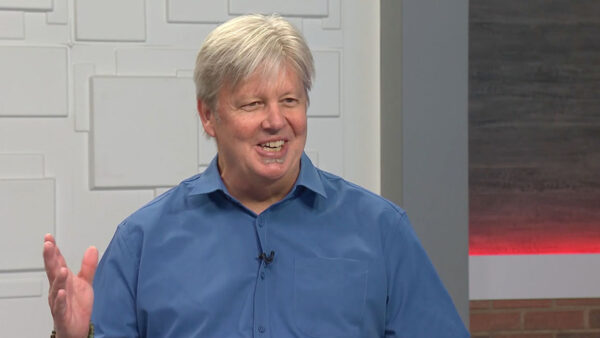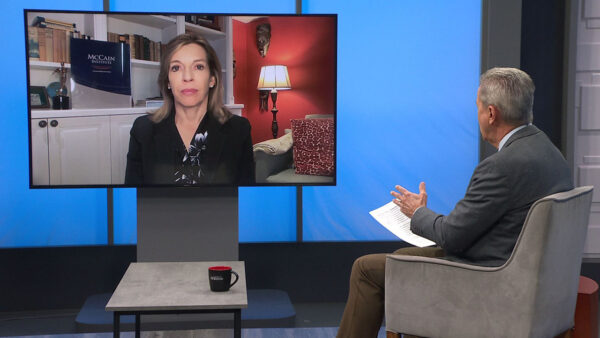Arizona Women’s Education and Employment provides programs and services to women and men who want to improve their current employment opportunities. Marie Sullivan, AWEE president and CEO, will discuss her group’s mission and the most meaningful way to measure the effectiveness of her group’s efforts.
Ted Simons: Arizona Women's Education and Employment is an organization that provides programs and services to women and men who want to improve their current employment opportunities. Marie Sullivan is the group's president and CEO. She joins us now. Good to have you here.
Marie Sullivan: Thank you. Delighted to be here.
Ted Simons: I want to get to something you wrote in the Phoenix Business Journal. It talks about nonprofits in a different way to measure impact. Arizona Women's Education and Employment.
Marie Sullivan: We're talking about education and we're talking about employment for women and men and older youth in our communities. We're changing their lives through the dignity of work, we're teaching, coaching and connecting individuals who are struggling to find work with employers who are struggling or want to find quality employees.
Ted Simons: Basically a match making system.
Marie Sullivan: Certainly is. A teaching moment, opportunity, hence the education in our name. As we coach people from that transition of learning how to find a job and keeping a job, we actually help support them find and hold on to that job so that becomes the employment angle.
Ted Simons: What I wanted to talk about was this article in the Phoenix Business Journal, this piece that you wrote. How do you know you're making an impact? What kind of measurements, what kind of metric -- how do you know?
Marie Sullivan: Great question, Ted. First, most because nonprofits run on the generosity of people in our community, whether they are corporations, foundations, individuals or public entities support our work. One way they want to know they are getting the best value for their dollar contribution is to ask us what are you doing and how are you doing it and what's different as a result of what you're doing? Over the years we used to talk additionally about the number of people I served, so it was straightforward number. We served over 160 thousand, individuals since the beginning in 1981. That number then was evaluated further. Well, what are those 160 thousand, people doing? So then we would measure people are certain percentage of funding work, a certain percentage are finishing our program. A certain percentage are enrolled. That took it to the next level. Then there was evaluation, well if that is how many people are doing that what's different? So for example, how many people are finding and keeping their jobs for a period of time? So we're always in the methodology of measuring the metrics of who we're serving and how we're doing it. My article talked about how we want to take that one step further. The mission is to change lives through the dignity of work. So what changes in their life as a result of finding a job? One, people can move from a transitional housing situation to renting a house, possibly buying a house. They can move from public transportation, though we all love and appreciate public transportation, to possibly owning a vehicle of their own. So we're making contributions then as a result of the success and the metrics we have measured in the past into the quality of life of our community. Hence the social impact that we have. That often is left behind as a measure. We're more invested in the metrics of how many people did you serve and what happened as a result of that.
Ted Simons: Again, they get help, they find a job. They find financial stability. They buy a house. The neighborhood is improved.
Marie Sullivan: Absolutely.
Ted Simons: They get help. They get a job. They buy a car. They can go out to the grocery store at more frequent intervals. With the car they buy food. The kids are better Fed. They become better students.
Marie Sullivan: Correct. Absolutely.
Ted Simons: I think we talked about a mathematical equation. There probably is some way to measure that.
Marie Sullivan: In this gentleman came up with a way to measure social impact. He created three numerical equations and it's far beyond my ability to grasp all of those particulars of those equations but he began to introduce the concept that if one measured through traditional numbers certain attitudes, behaviors, out comes, then you could equate that into social impact. Again, with those mathematical equations he started the conversation that has now translated into a new trend in collaborative funding for nonprofits into a conversation about the Arizona we want, for example, locally. Those then are conversations that we are having about how do we improve the quality of life of individuals in our area.
Ted Simons: Is it a trend and a conversation that you think most nonprofits are comfortable with?
Marie Sullivan: I would think that we have all been engaged in the idea that someone's life changes as a result of what we're doing. But we have gotten often stuck on trying to satisfy other people's interests in the numbers. When one is evaluating the return on investment or better bang for my buck, talking about those metric evaluations, that's where the conversation often ends. I have been in conversation with funders before who have said, well, if I give you $10 thousand dollars can you serve 1,000, people? And if I say yes but I would prefer to serve 100 people, then the conversation back to me would be I can take my money and serve more people with the $10,000. But if I was to say out of those 100 people we're going to have 1000 stabilized families, those families have an average of two children each. So then we are doubling the number of children who are going to be successful in school, who are going to grow up having better role models. The bang fort Buck is probably exponentially better.
Ted Simons: Folks who donate to nonprofits, are they getting this idea?
Marie Sullivan: More and more. It's a national trend, and I would like to see more in Arizona.
Ted Simons: Very good. Good to have you here. Very thought provoking stuff.
Marie Sullivan: Thank you.
Marie Sullivan:President and CEO, Arizona Women's Education and Employment;























